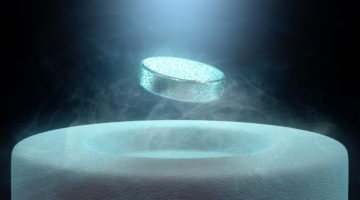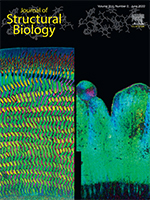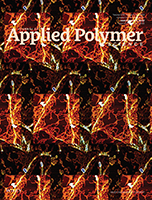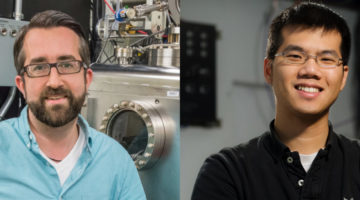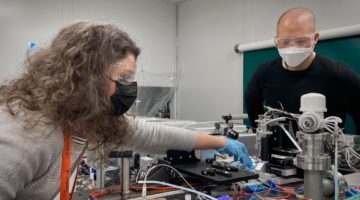Researchers studied a model material (CeCoIn5) that mimics a cuprate superconductor that can be switched on and off using high magnetic fields. In chemical compositions where the superconductivity is strongest, the number of free electrons jumps, signifying a transition point. The researchers attributed this transition to the behavior of electrons associated with the cerium atoms. Read more »
A Brighter Future for Stretchable Electronics
By continuously monitoring physiological signals, wearable “stick-on” sensors not only help people stay healthy, they can also provide early warning of potential health problems. At the ALS, researchers studied the morphology of such a sensor’s active material, which is key to controlling and optimizing its structure and performance. Read more »
Enhancing the inherent catalytic activity and stability of TiO2 supported Pt single-atoms at CeOx–TiO2 interfaces
Single atoms with atomically coordinated reaction centers are considered next-generation catalysts. However, there is concern about their thermodynamic vulnerabilities and whether their inherent catalytic nature is superior compared with that of larger nanoparticles. Here, we address the two controversies by a comparative study using two catalysts. Read more »
Biomineralization: Integrating mechanism and evolutionary history
In this review, Gilbert et al. develop a model for calcium carbonate biomineralization applicable to all phyla. Their model may help elucidate the key genetic components that drive biomineralization and offers insight into the consequences of global climate change on marine organisms. Read more »
Loss of biological control of enamel mineralization in amelogenin-phosphorylation-deficient mice
Amelogenin phosphorylation plays crucial roles in controlling structural, crystallographic, mechanical, and compositional characteristics of dental enamel. Thus, loss of amelogenin phosphorylation leads to a reduction in the biological control over the enamel mineralization process. Read more »
Programmable stiffness and stress–relaxation of cross-linked self-assembling peptide hydrogels
An AFM image representing a supramolecular hydrogel based on a cross-linked self-assembling peptide (SAP). Cross-linking allows for precise tuning of biomechanical properties, spanning the range of stiffness values found in the human central nervous system, pancreas, liver, lung, and skin tissues. The findings provide a new strategy helpful for soft tissue regeneration. Read more »
How X-Rays Can Make Better Batteries
In order to help our nation meet its goal of net-zero carbon emissions by 2050, scientists like William Chueh and David Shapiro are working together to come up with new strategies to design safer, long-distance batteries made from sustainable, Earth-abundant materials. They discuss their pioneering work in this Q&A. Read more »
Safely Studying Dangerous Infections Just Got a Lot Easier
Researchers have cranked up the speed of imaging infected cells using soft x-ray tomography, a technique that can generate incredibly detailed, three-dimensional scans. The approach gives an easy way to quickly examine how cells’ internal machinery responds to SARS-CoV-2, or other pathogens, as well as how the cells respond to drugs designed to treat the infection. Read more »
A Photoelectrode Protection Scheme for Solar-Fuel Production
Microscopy, spectroscopy, and computational studies of a promising artificial-photosynthesis material led researchers to develop a model photoelectrochemical (PEC) cell with remarkable stability and longevity as it selectively converts sunlight and carbon dioxide into two promising sources of renewable fuels—ethylene and hydrogen. Read more »
ALS in the News (February 2022)
-
-
-
- Scientists discover ‘secret sauce’ behind exotic properties of new quantum material
- Plant smoke detectors evolve as hormone sensors
- Autofocus for x-ray crystallography: How AutoML targets samples at the ALS
- With a little help, new optical material assembles itself
- Coral skeleton formation rate determines resilience to acidifying oceans
-
-
- « Previous Page
- 1
- …
- 24
- 25
- 26
- 27
- 28
- …
- 83
- Next Page »
